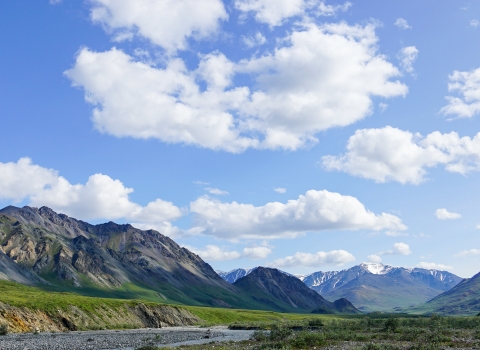SACRAMENTO — This week, the U.S. Fish and Wildlife Service and the California Department of Fish and Wildlife (CDFW), along with the California Department of Water Resources (DWR) and the U.S. Bureau of Reclamation, experimentally released captively produced Delta smelt into the Sacramento-San Joaquin River Delta. This experimental project will help inform future supplementation of the species in the wild.
Once plentiful in the Delta ecosystem, this annual fish species is now a rare sight in monitoring surveys that provide data on fish abundance. After a recent sustained period of severe drought from 2014-2016 and limited water availability in California, the numbers of Delta smelt remaining in the wild plummeted to record lows. With drought conditions once again returning to California, the need to explore new management techniques for this species is urgent.
Recent studies led by DWR to gauge the survivorship of captively produced smelt in wild conditions helped to pave the way for these releases. The studies found that captively born and raised adult fish not only show very high survival rates when placed in enclosures in the Delta for a month, but that they are capable of growing and feeding in wild conditions as well.
“These preliminary studies have bolstered our confidence that Delta smelt born and raised in hatcheries can acclimate to wild conditions and support recovery of the species,” said Dean Messer, Division Manager for DWR’s Division of Integrated Science and Engineering. “By working with and leveraging resources from our federal and state partners, we are able to continue providing aid to native fish species during this drought.”
“Delta smelt are a critically imperiled species, so it’s crucial that we take action now because there are fewer and fewer smelt in the wild,” said CDFW Director Charlton H. Bonham. “It’s a dire situation and it’s exacerbated by the current drought we’re in. I’m grateful for the collaborative spirit of the partner agencies involved in this experimental release. It’s an important step forward in doing everything we can to save Delta smelt from extinction.”
This multi-agency project builds on the results from earlier enclosure research and takes the next step to explore methods for returning fish to the wild, which has not been attempted with Delta smelt. Biologists will use data gained from this project to assess how to effectively and safely release fish into the wild.
“I would like to thank the California Department of Fish and Wildlife, our other state and federal partners, and others who were instrumental in this project,” said Paul Souza, Regional Director for the U.S. Fish and Wildlife Service’s California-Great Basin Region. “Together, we can help recover and conserve this species for future generations.”
“Reclamation is proud to be part of this multi-agency partnership to help secure and stabilize Delta smelt populations through this coordinated program,” said Reclamation Regional Director Ernest Conant. “The experimental release will inform the planning for increased supplementation being pursued as part of the conservation activities in Reclamation’s 2020 Long-term Operation Plan of the Central Valley Project and State Water Project.”
The purpose of this Delta smelt project is to benefit conservation of the species through studies of experimental release of captively produced fish into a portion of its current range. This is the first year of experimental release of Delta smelt with the goal of developing and testing logistics and protocols. The results will be used to determine how to improve survival of physically tagged, hatchery-origin Delta smelt after release into favorable locations in the Delta and fill critical knowledge gaps to increase the likelihood of success of potential future releases.
Photos and videos from this week’s release can be viewed and downloaded from the Fish and Wildlife Service’s California-Great Basin Region Flickr page.
The mission of the Department of Water Resources is to sustainably manage the water resources of California, in cooperation with other agencies, to benefit the state’s people and protect, restore, and enhance the natural and human environments. For more information, follow us on Twitter or Facebook and read our news releases and DWR updates.
The mission of CDFW is to manage California's diverse fish, wildlife, and plant resources, and the habitats upon which they depend, for their ecological values and for their use and enjoyment by the public. CDFW is the State of California’s trustee for fish and wildlife and administers and enforces the Fish and Game Code including sections of the California Endangered Species Act, fully protected species, lake and streambed alteration, water pollution, and other related natural resources issues.
The Bureau of Reclamation is a federal agency under the U.S. Department of the Interior and is the largest wholesale water supplier in the United States, and the nation's second largest producer of hydroelectric power. Our facilities also provide substantial flood control, recreation opportunities, and environmental benefits. Visit our website at https://www.usbr.gov and follow us on Twitter @USBR; Facebook @bureau.of.reclamation; LinkedIn @Bureau of Reclamation; Instagram @bureau_of_reclamation; and YouTube @reclamation.
The U.S. Fish and Wildlife Service works with others to conserve, protect, and enhance fish, wildlife, plants, and their habitats for the continuing benefit of the American people. For more information about our work and the people who make it happen, visit https://www.fws.gov/cno/ or connect with us via Facebook, Twitter, YouTube, and Flickr.


